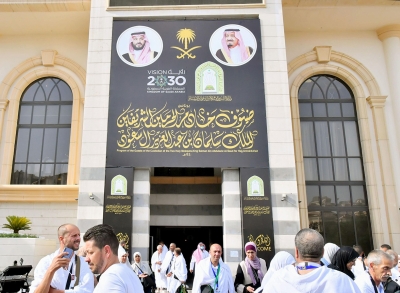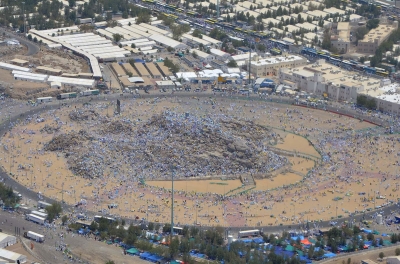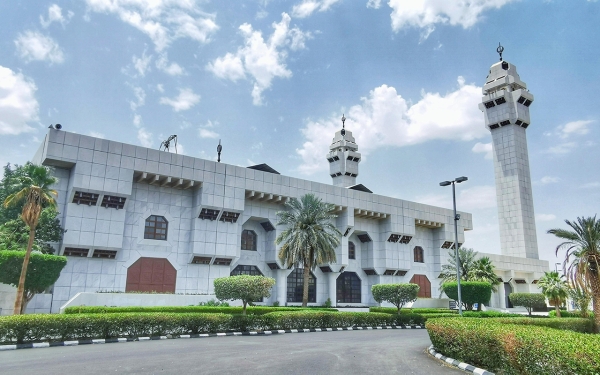
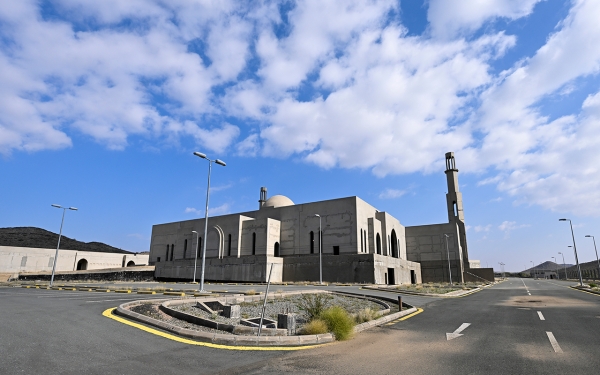
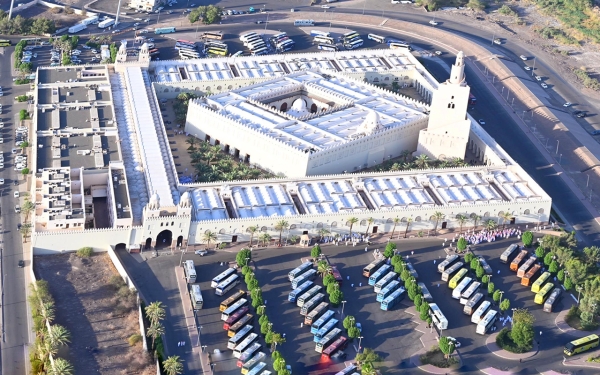
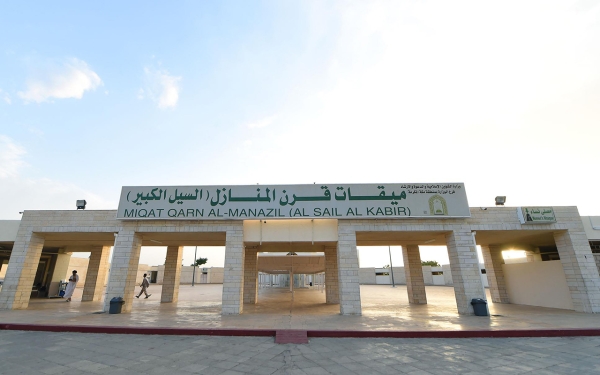
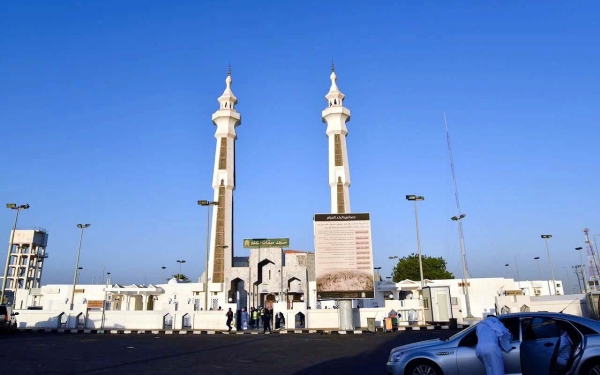
Mawaqit al-Ihram are designated locations where individuals intending to perform Hajj or Umrah in Makkah al-Mukarramah are required to pass through in order to enter the state of Ihram. Ihram constitutes one of the four pillars of Hajj, along with standing at Arafat and performing Tawaf al-Ifadah and al-Sai.
These Mawaqit were established as a mark of reverence for the Grand Mosque, aiming to steer clear of prohibited behaviors and speech, while engaging in virtuous acts and upholding righteousness.
Mawaqit al-Ihram and their locations
There are five Mawaqit al-Ihram, established by the Prophet Muhammad, peace be upon him (PBUH), and it is not permissible for the pilgrims or Umrah performers to pass them on their way to Makkah al-Mukarramah without entering the state of Ihram. They are Dhu al-Hulayfah for the residents of al-Madinah, al-Juhfah for those coming from the Levant, Qarn al-Manazil for those coming from Najd, Yalamlam for those coming from Yemen, and Dhat Irq for those coming from Iraq. The Miqat designated by scholars is Wadi Muharram for the pilgrims from Taif and the southern region of the Kingdom, as well as the pilgrims from Hejazi Yemen.
Miqat Dhu al-Hulayfah
It is the Miqat for the people of al-Madinah, known as 'Abyar Ali'. Situated 450 km away from Makkah al-Mukarramah, it was named al-Hulayfah after the diminutive name of 'al-Halaf' plant, renowned for its abundance at the site. Its elevation is 640 m above sea level.
Miqat Dhu al-Hulayfah is located on the western side of Wadi al-Aqiq, approximately fourteen km from the Prophet’s Mosque. It is a historical site in al-Madinah al-Munawwarah as one of the Mawaqit designated by Prophet Muhammad (PBUH) for the people of al-Madinah and others passing through in the state of Ihram.
Miqat al-Juhfah
It is the Miqat for the people of the Levant, Egypt, and Maghrib, as well as African pilgrims and those passing through. Situated in the northwest of Makkah al-Mukarramah and the southeast of Rabigh Governorate, The people of the Levant, Egypt, Maghrib, and all African pilgrims and those passing through enter the state of Ihram there. Located 180 km from Makkah al-Mukarramah, it has been replaced by another Miqat in Rabigh, which is only seventeen km away.
Miqat of Qarn al-Manazil
Qarn al-Manazil or Qarn al-Tha'aleb serves as the Miqat for the people of Najd, the Arabian Gulf, and those traveling along their route. Referred to as 'al-Sayl al-Kabir', it sits approximately fifty-five km north of Taif Governorate, at an elevation of around 1,200 m above sea level. Situated roughly seventy-five km from Makkah al-Mukarramah, it features a mosque, parking facilities, and restroom amenities.
Miqat Yalamlam
Yalamlam al-Qadim, its name tracing back to 'Jabal Lalamlam', derives its significance from 'Wadi Yalamlam', stretching from east to west and flowing into the Red Sea. It serves as the Miqat for the people of Yemen, the southern regions of the Kingdom, and those passing through it. Currently, people enter the state of Ihram from the new al-Saadia Mosque, situated 130 km south of Makkah al-Mukarramah and twenty-one km from the ancient Miqat site. It stands on the northern bank of Wadi 'Yalamlam' near al-Saadia Well.
Miqat Dhat Irq
Dhat Irq is the Miqat for the people of Iraq and the northern region of the Kingdom. Its name originates from a mountain rising approximately 1,141 m above sea level, topped by a black "Irq" stretching 1,500 m from southwest to northeast. It is located roughly one hundred km northeast of Makkah al-Mukarramah.
Miqat Wadi Muharram
Wadi Muharram, serving the pilgrims from Taif, the southern region of the Kingdom, and Hijazi Yemen, was identified by scholars as Miqat A'la al-Qarn when 'al-Huda' road was established. It is situated northwest of Taif, approximately ten km away, at an altitude of about two thousand m above sea level.
Miqat of the people of Makkah al-Mukarramah and Jeddah
The people of Makkah al-Mukarramah enter the state of Ihram from their homes for Hajj, from outside the boundaries of the Haram for Umrah, such as al-Taneem (a mosque in Makkah al-Mukarramah), al-Ju'ranah, and Arafat.
The people of Jeddah enter the state of Ihram from their homes for both Hajj and Umrah, and everyone who passes through the Mawaqit, intending to Makkah with the intention of Hajj or Umrah, must enter the state of Ihram from it. Whoever crosses it intentionally must return to it to enter the state of Ihram from it; otherwise, they must sacrifice the blood of a sheep that they slaughter in Makkah al-Mukarramah and distribute it to the poor.
Miqat for those arriving by ship or air
Provisions exist for individuals arriving by air or sea who pass over or near the Miqat. Those arriving by sea enter the state of Ihram aboard the ship when they are adjacent to the Miqat. Similarly, those arriving by air should ascertain the location of the Miqat and enter the state of Ihram before reaching it. Alternatively, they may enter the state of Ihram at the airports of their countries if they anticipate crossing the Miqat before entering the state of Ihram.
Related quizzes

